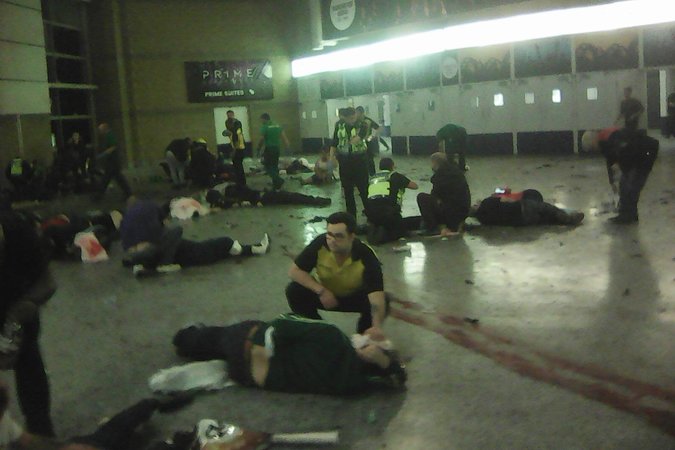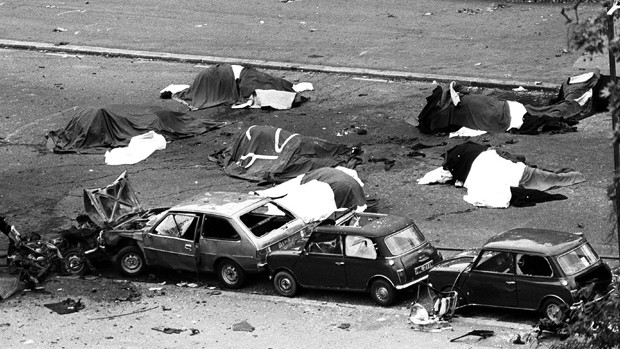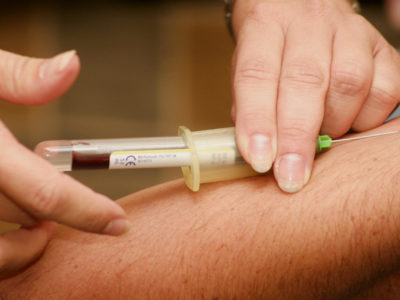 In his 1975 book about Irish nationalism the Parisian writer Maurice Goldring wrote about the void which can too easily be concealed behind the noise of battle.
In his 1975 book about Irish nationalism the Parisian writer Maurice Goldring wrote about the void which can too easily be concealed behind the noise of battle.
‘To substitute a “spectacle” for the participation of the masses is to hide a wasteland behind gaudy coloured hoardings. The emptier the political arena becomes, the more vivid the colours must be, the most garish tints are those associated with explosives. White, black, the ochre of the explosion, the redness of the blood.’
When the absence of mass participation is rationalised, Goldring observes, forms of popular struggle are sacrificed for the sake of guerilla exploits. Easier to find candidates for armed heroism than to find activists prepared to dedicate themselves to trade union organisation and political education.
I think of Goldring’s words often – more often than I would like to – in these days where one atrocity is swiftly followed by another. It is almost as if these atrocities are a series of advertisements punctuating the endless repetition and lack of analysis of Rupert Murdoch’s Sky and Fox News.
I was paralysed by the deadly attack in Manchester from the moment I heard it on the early bulletins on BBC Radio Four on Monday morning.
I had no words. I was lost for a political response.
That is something very, very familiar to those of us who have lived through the most recent Irish troubles from 1966 to 1996, which left more than three thousand people dead, and tens of thousands injured and traumatized.
In 1973 Martin Dillon published his book Political Murder in Northern Ireland, about the heavy death toll of what media commentators liked to describe as ‘yet another apparently random meaningless murder’ on the back streets of Belfast.
Dillon’s book was the first to give voice to the idea that, no matter how futile and abhorrent these murders were, it was as wrong and misguided to strip the victims’ deaths of meaning as it was wrong and misguided to dismiss the perpetrators of these brutal acts as stereotypical Irish thugs or ‘thick Micks’ as the tabloids sometimes described them.
Gandhi is often credited with being the first to say, ‘an eye for an eye makes the whole world blind.’ There are none so blind as they who will not see, and it is true that dismissing the Irish conflict as vicious and atavistic grudge matches between two apparently irreconcilable groups suited the interests of the British state. Easier by far to dismiss the Irish conflict as two warring tribes where the courageous British Tommy stands in the middle putting his life at risk to save others.
But we don’t – and never did – live in a binary world. Reducing concepts, ideology, cultural identities to a series of mutually exclusive oppositions made it problematic to discuss the role of the British state in the development of the Irish troubles. What to say about Bloody Sunday in 1972, for example, where thirteen unarmed civil rights marchers in Derry were systematically murdered in cold blood by British soldiers?
This was why I was lost for words on Monday morning.
All I could think of was the pain and distress of the victims’ families, desperately seeking reassurance about their loved ones, but all too often being given the most terrible news imaginable about their fate.
 Then I remembered what I was doing on Easter Sunday 1977.
Then I remembered what I was doing on Easter Sunday 1977.
I was a very young, very inexperienced freelance journalist. There was plenty of work in those days of the troubles, but still no-one was too keen to go out and report on rival parades commemorating the failed Easter Rising of 1916. Tensions were already running high between the more militant Provisional IRA and the Official IRA who had been on a largely well observed ceasefire since 1972 when they carried out an appalling bomb attack at an army barracks in England which killed a couple of civilian cleaners and a chaplain.
The Provisional IRA parade had just moved off from Beechmount Avenue off the Falls Road in West Belfast. The Official IRA parade was just forming up. I had just come back from watching the Provisionals and was passing the time by spotting people I knew in the Official’s ranks.
Suddenly, just along the street from where I was standing, a bomb exploded. Clouds of smoke billowed out, and there was a brief moment’s silence before people started to flee.
I was trying to see what was going on when a woman in her thirties ran past me in the direction of the bomb, arms outstretched, screaming ‘the child, the child, the child…’
The woman was Sue McMenamin who had brought her 7-year-old son, Kevin, to watch what was usually a good family day out.
I later came to know Sue well and she told me what had happened. She had given Kevin some money to buy sweets at a corner shop and was waiting for him to return when the bomb went off. It had been planted on the window sill of the shop. Kevin was killed instantly.
Given the tension between the two wings of the IRA, the Officials assumed, mistakenly, that the Provisionals had launched an attack on them. In fact, the bomb had been planted by a loyalist paramilitary, the Ulster Volunteer Force (UVF) and had been targeted at the Provisional IRA parade which had just left. The bomb had failed to go off at the time they had planned.
I haven’t thought about poor Kevin McMenamin, his father Paul and his mother Sue for quite some time. I remembered them when I thought of the distress felt by the families of the Manchester attack.
But still I had no words to articulate what I felt until last night, when I read this.
This brilliant analysis restored meaning and context to Manchester. More than that, it framed Manchester as part of the power play of Trump, Putin, Assad and May in their misguided and wicked attempts to impose a new world order.
Last month Donald Trump launched 58 missiles at Syria.
Now Donald Trump is a billionaire. He understands that the business of America is war, and war is big business. Trump himself holds stock in Raytheon, the world’s largest producer of guided missiles. After he chose to use Tomahawk missiles, made by Raytheon, the company’s stock rose by 2.1%. Replacing those fired at Syria alone will cost upwards of $100 million.
Theresa May has learned a lot from Trump. It was a shrewd eve of election move to raise the terror alert in the UK to ‘critical’, the highest possible meaning imminent attack is likely. She was trying to put Jeremy Corbyn, the Labour leader, on the back foot in the wake of smears on him following his refusal to condemn the Northern Irish troubles and the IRA in a black\white, evil/good, Labour/Tory binary relationship. Corbyn has condemned all bombings, of course. But what Theresa May cannot stomach is that he has the breadth, vision and courage to see a fuller picture. He remembers Bloody Sunday. If Theresa May were serious about the UK being on the highest possible terrorist alert, she would surely not have announced cuts in policing and security budgets on Wednesday.
And as for Donald Trump’s blatant commercial courting of Saudi Arabia last week, it is only matched by Theresa May’s blank refusal to even examine British arms sales to Saudi Arabia.
Last month I wrote in Social News
‘International diplomacy has been replaced by armed propaganda: the furtherance of strategic, military and economic interests by means of proxy wars.
As Sun Tzu said in The Art of War, ‘The supreme art of war is to subdue the enemy without fighting.’ It is a doctrine that both Donald Trump and Theresa May seem eager to adopt – but not in their own back yard.’
True then, true now.
What I forgot to do was to follow the money. It is a tragedy that at least 22 people have lost their lives while Russia, Syria, America and Britain engage in a macabre and twisted attempt to build a new world order.






